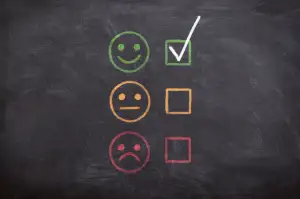Understanding Pica: The Risks and Effects of Eating Corn Starch for Your Health

- Understanding pica and its potential health implications
- The reasons behind the consumption of corn starch
- The nutritional value (or lack thereof) of corn starch
- The potential risks and side effects of eating corn starch
- Tips for managing and overcoming the urge to eat corn starch
- Seeking professional help and guidance for individuals with pica
Corn starch, a fine white powder derived from the endosperm of corn kernels, is commonly used as a thickening agent in cooking and baking. However, for some individuals, eating corn starch goes beyond its culinary purpose and becomes a compulsive behavior known as pica. Pica is a disorder characterized by the persistent craving and consumption of non-food substances. In this article, we will explore the risks and effects of eating corn starch for your health, as well as provide tips for managing this urge and seeking professional help if needed.
Understanding pica and its potential health implications
Understanding pica is crucial in recognizing the potential health implications associated with the consumption of corn starch. Pica is a disorder characterized by the persistent craving and ingestion of non-food substances, such as dirt, clay, or in this case, corn starch. This behavior can lead to serious health consequences, as these substances are not meant to be ingested and can cause digestive issues, nutrient deficiencies, and even organ damage. It is important to address pica promptly to ensure the overall well-being and health of individuals who engage in this behavior.
The reasons behind the consumption of corn starch
The reasons behind the consumption of corn starch can vary from person to person. Some individuals may consume corn starch due to a craving or compulsion, which is often associated with pica. Others may find comfort in the texture or taste of corn starch, using it as a form of stress relief or emotional support. Additionally, cultural and social factors can play a role in the consumption of corn starch, as it may be seen as a traditional practice or used in certain recipes. Understanding the underlying reasons behind this behavior is crucial in addressing and managing pica effectively.
The nutritional value (or lack thereof) of corn starch
Corn starch is a common ingredient used in cooking and baking, but when it comes to nutritional value, it falls short. Unlike whole corn or cornmeal, corn starch is highly processed and stripped of its nutrients. It mainly consists of carbohydrates and lacks significant amounts of vitamins, minerals, and fiber. Consuming corn starch alone does not provide the body with essential nutrients needed for optimal health. Therefore, relying on corn starch as a source of nutrition is not recommended.
The potential risks and side effects of eating corn starch
The potential risks and side effects of eating corn starch are significant. Firstly, consuming large amounts of corn starch can lead to weight gain and obesity due to its high calorie content. Additionally, it lacks essential nutrients such as vitamins, minerals, and fiber, which are crucial for maintaining a healthy diet. Moreover, excessive intake of corn starch can cause digestive issues like bloating, constipation, and abdominal pain. It may also increase the risk of developing diabetes and heart disease. Therefore, it is essential to be aware of these risks and limit the consumption of corn starch to maintain good health.
Tips for managing and overcoming the urge to eat corn starch
1. Identify triggers: Pay attention to what situations or emotions lead to the desire to eat corn starch. Understanding your triggers can help you develop strategies to manage the urge.
2. Find alternatives: Instead of reaching for corn starch, try substituting it with healthier options such as whole grains, fruits, or vegetables. These alternatives will provide essential nutrients and satisfy your cravings in a more nutritious way.
3. Distract yourself: When the urge strikes, distract yourself by engaging in activities that keep your mind occupied. This could be reading a book, going for a walk, practicing a hobby, or talking to a friend.
4. Seek support: Reach out to friends, family members, or support groups who can provide encouragement and understanding during your journey to overcome pica. Sharing your struggles with others can make the process feel less isolating.
5. Practice stress management techniques: Stress can often trigger pica cravings. Explore stress management techniques such as deep breathing exercises, meditation, yoga, or journaling to help reduce anxiety and control the urge to eat corn starch.
6. Maintain a balanced diet: Ensure that you are consuming a well-balanced diet rich in vitamins and minerals. A nutrient-deficient diet may increase cravings for non-food substances like corn starch.
7. Stay hydrated: Sometimes dehydration can mimic hunger or cravings. Drink plenty of water throughout the day to stay hydrated and reduce unnecessary food cravings.
Remember, overcoming pica is not easy and may require professional guidance and support from healthcare providers specializing in eating disorders.
Seeking professional help and guidance for individuals with pica
Seeking professional help and guidance is crucial for individuals struggling with pica. A healthcare provider, such as a doctor or therapist, can provide a comprehensive evaluation to determine the underlying causes of the behavior. They can also develop a personalized treatment plan to address the individual's specific needs. This may involve cognitive-behavioral therapy, counseling, or medication to manage any underlying mental health conditions. It is important to remember that overcoming pica requires patience and support from trained professionals who can guide individuals towards a healthier relationship with food.
In conclusion, it is crucial to promote a healthy relationship with food and address the issue of pica. While eating corn starch may seem harmless to some, it can have serious health implications. Understanding the reasons behind the consumption of corn starch and its lack of nutritional value is essential in managing and overcoming the urge to eat it.
It is important to remember that seeking professional help and guidance is vital for individuals struggling with pica. Healthcare professionals can provide valuable support in identifying underlying causes and developing strategies to manage this condition effectively.
By promoting education about pica and its potential risks, we can work towards creating a society that embraces a healthier relationship with food. Let us encourage open conversations about this disorder, reduce stigma, and provide resources for those who need assistance.
Ultimately, our goal should be to foster a love for food that goes beyond unhealthy cravings or habits. By understanding pica and taking steps towards addressing it, we can ensure that every dish we consume truly reflects our passion for nourishing our bodies in a safe and balanced way.
Published: 08. 12. 2023
Category: Health



